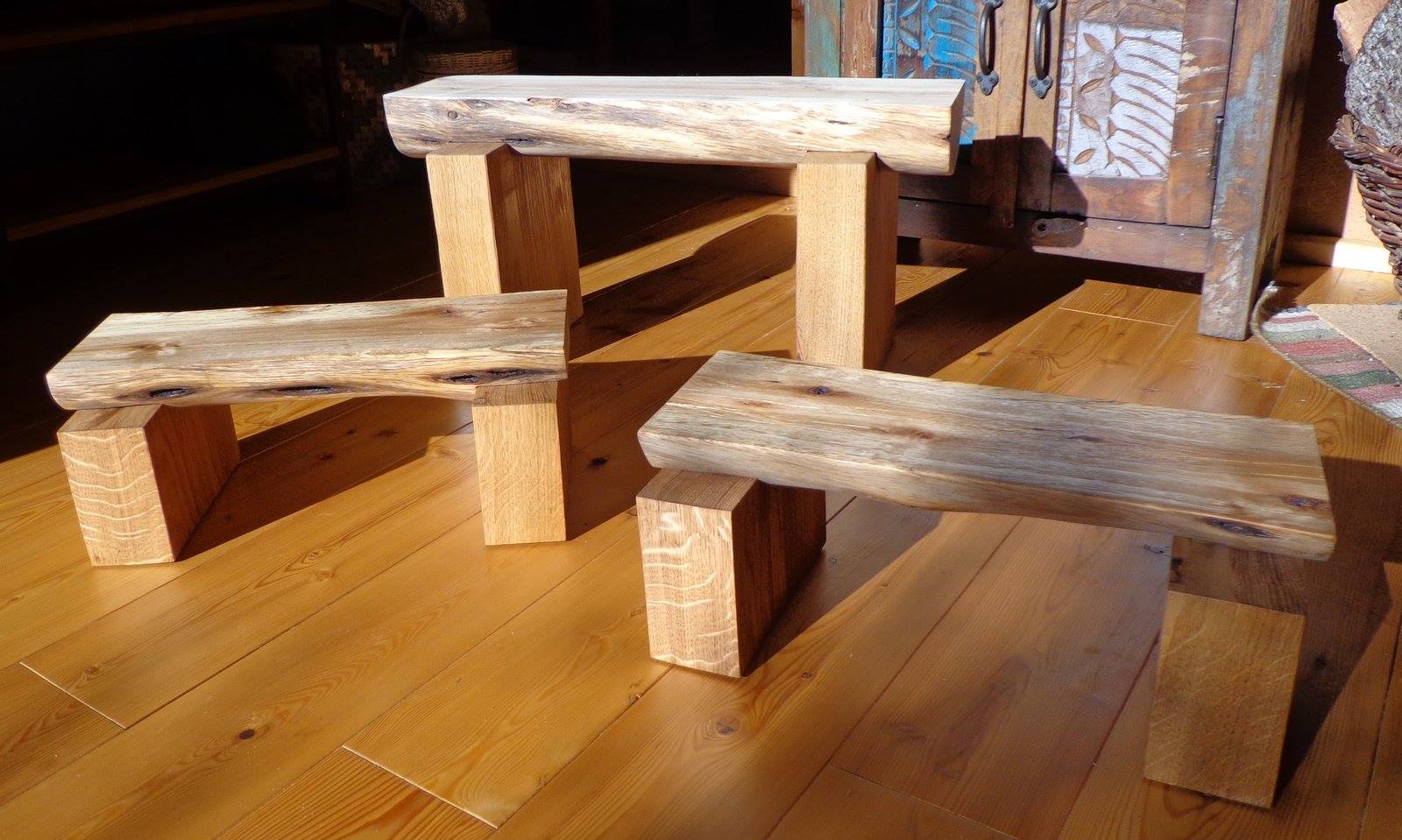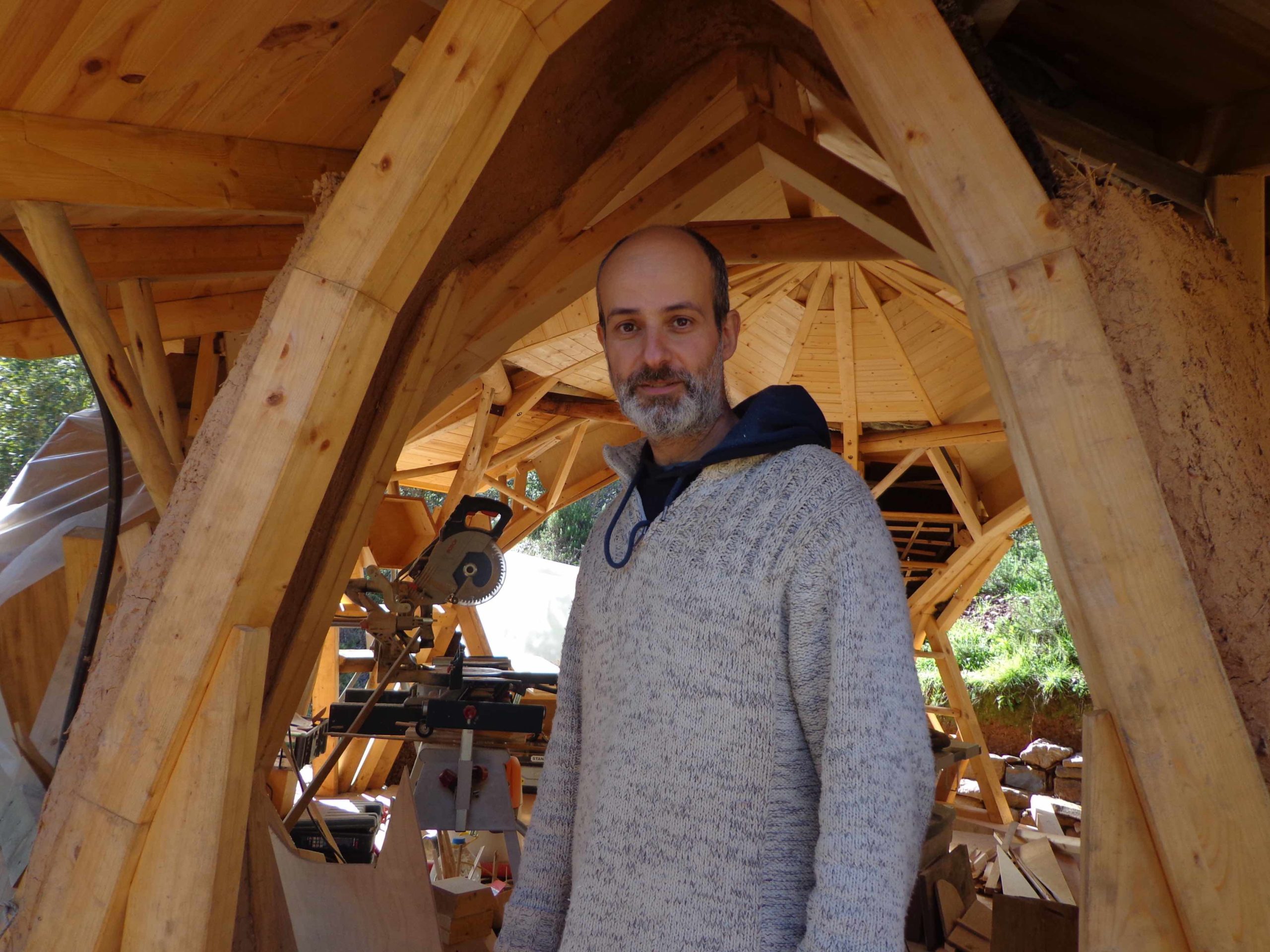Wood for Life
from Monte da Vida, Portugal
Hearth Stools
These very solid hearth stools are made of eucalyptus and oak, harvested at Monte da Vida in Portugal as part of the regenerative forest management plan. (Scroll down the page to read more).
They are perfect for placing near the woodburner or open fire to sit on when making and tending the fire.
They also make good foot-stools or spare extra seating.
Go to the SHOP to buy.

Turning Eucalyptus plantation into mixed biodiverse forest.
Eucalyptus is a fast growing tree that has spread around the world for its use in paper pulp. But its use in dense monoculture plantations has a negative impact on the environment and water table, in some places with disastrous consequences.
Its negative effects are twofold. Firstly it uses a lot of water, draining the land of its deeper water stores and water starving its competition. Secondly, the eucalyptus life cycle relies on fire to propagate its seed, so the tree is evolved to burn. Hence its use in a plantation supports both drought and creates a fire hazard. As well as out competing many indigenous trees and plants.
Now many are discovering a more balanced and ecological use for these trees as part of an integrated regeneration program for mixed forests and forest gardens. The eucalyptus’ strength is that it can grow on heavily degraded soil without the need for much irrigation. It grows fast to create shade and biomass. This shade can be used for other trees and plants, and as the eucalyptus tree begins to mature it can be regularly pruned to create biomass, which as it decomposes helps build soil for the new trees or forest garden that is grown under the eucalyptus.(This process can be accelerated by transforming the biomass into wood chip). This approach provides a radical and rapid way to turn degraded land back into rich biodiverse mixed forest and stands it stark opposition to the use of eucalyptus as a traditional paper pulp monoculture.
We have integrated a final stage into this system, where as the trees planted amidst the pruned eucalyptus grow and mature, the original eucalyptus is thinned and later is finally cut. The wood produced from this final cut yields high quality sections that are used for creating furniture. The rest can be used either for creating biochar (that is again used to increase soil fertility), firewood for heating, or can be chipped for more biomass for the forest floor.
This furniture is made from a combination of a) eucalyptus wood that is selectively harvested as part of this above described regeneration program, and b) oak wood that has grown in planted cork oak forest and has been cut as part of tree pruning and thinning, or died of natural causes.
This furniture funds ongoing development of this regeneration program.
Meet the maker
Servan Keondjian
As a specialist in 3D spatial simulations, Servan spent many years building in the virtual world, developing 3D computer software to create within the digital space, including Direct3D for Microsoft and Lego Digital Designer for Lego.
Since co-founding the Monte da Vida project in Portugal in 2013, he has discovered the joy of building in the ‘real’ world, (a joy that had been lost since long-distant days of playing with lego).
He has taught himself carpentry and designed and built geometrically elegant buildings, as well as finding creative ways to transform low value ‘waste’ wood into simple furniture that respects its material and gives it a new life.

